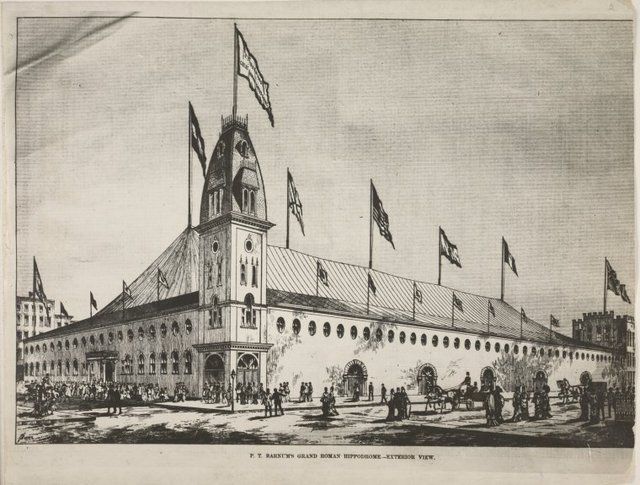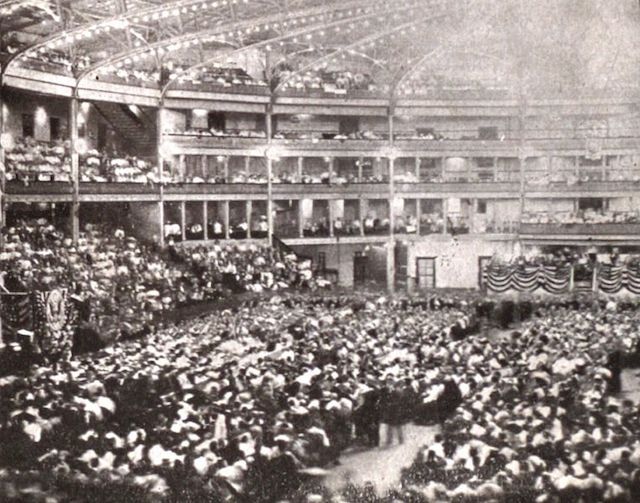Last-Minute NYC Holiday Gift Guide 🎁
We’ve created a holiday gift guide with presents for the intrepid New Yorker that should arrive just in time—


In 1832, New York’s first railroad line opened, The New York and Harlem Railroad, utilizing not steam but horse drawn carriages. By 1845, the railroad opened up a depot at the northeast corner of Madison Square Park. In 1871, Cornelius Vanderbilt created a new station on 42nd Street and leased the old one to P. T. Barnum.
Barnum’s “Great Roman Hippodrome,” or “Barnum’s Monster Classical and Geological Hippodrome” was very successful as a seasonal venue. In 1879, William Kissam Vanderbilt, Cornelius’ grandson, renamed the venue Madison Square Garden. The venue was used as a velodrome, for multi-day races, and even for a Roman Carnival.

Source: NYPL
In 1884, Vanderbilt announced that he would be demolishing Madison Square Garden since he did not find it to be profitable enough. A consortium including J. P. Morgan, P. T. Barnum, and Andrew Carnegie decided that Vanderbilt did not appreciate the business opportunities that the Garden offered and purchased the land.

Photo via Library of Congress
In 1890, the Second Madison Square Garden opened. It was designed by Stanford White at a cost of over three million dollars. The Beaux Arts Moorish building possessed a tower modeled on the Giralda in Seville, which was surmounted by Augustus Saint-Gauden’s Diana (currently located in the Philadelphia Museum of Art). The Garden shall forever be remembered in infamy because it was in its rooftop garden, in 1906, that Harry K. Thaw killed Stanford White.
The Second Madison Square Garden was also the site of the 1924 presidential convention (at 103 ballots the longest convention) the first time a woman was nominated to be Vice-President of the United States.

Source: NYPL
In 1923, New York Life Insurance, which held the mortgage on the Second Madison Square Garden, decided to demolish the arena and build their new headquarters at Madison Avenue and 26th Street. Cass Gilbert, who had designed the Woolworth Building, was brought on as the architect, though he had to satisfy the whims of the company’s executives.
New York Life debated between a squat, massive ziggurat-like building, a high tower, and twenty story building with a 144 square foot tower. Cass Gilbert was in favor of the high tower, as he believed that New York Life should have “the most ‘distinguished’ thing that they could get in New York.”
An interesting side note, Cass Gilbert attempted to save part of Madison Square Garden, due to its beauty and the fact that Stanford White was his mentor. He attempted to save the Giralda-inspired tower and have it moved to the NYU’s Bronx campus, which had also been designed by White. Sadly, no donors stepped forward and the building’s fate was sealed.
Gilbert’s third and final version of the neo-Gothic skyscraper in New York City was inspired by Salisbury Cathedral and was completed in 1928. On December 12, 1928, after the President of New York Life, Darwin P. Kingsley, formally dedicated the building, President Calvin Coolidge pressed a button, from the White House, which unfurled an American flag in the building.
Subscribe to our newsletter